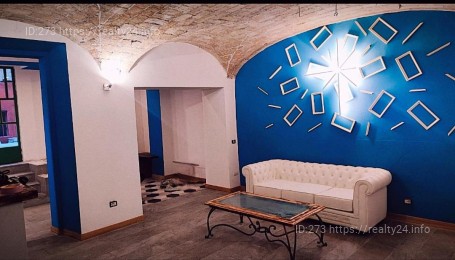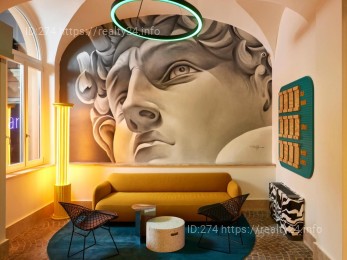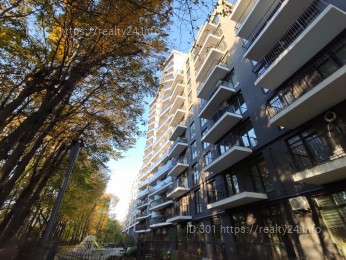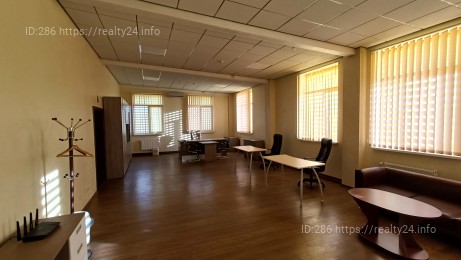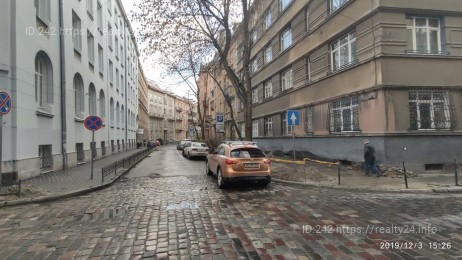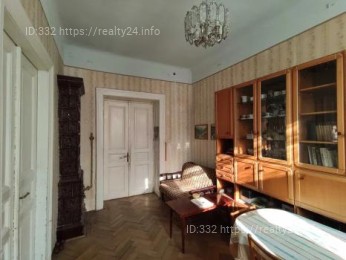Roma - Buy, Rent or Find Realty and Services...

Rome (Latin and Italian: Roma) is the capital and largest city of Italy (in terms of agglomeration population, it is inferior to Milan and Naples). The administrative center of the Lazio region and the territorial unit of the same name Rome, equivalent to a province. Situated on the Tiber River. Part of the territory of Rome belongs to the Vatican City State.
Founded in 753 BC, Rome is one of the oldest cities in Europe, the capital of an ancient civilization. Even in antiquity (3rd century AD), Rome was called the "Eternal City" (Latin: Roma Aeterna, Urbs Aeterna). One of the first to call Rome this way was the Roman poet Albius Tibullus (1st century BC) in his second elegy. The idea of the "eternity" of Rome largely survived after the fall of the ancient Roman civilization, bringing the corresponding epithet into modern languages.
Rome is also called the "city on seven hills". Initially, the settlements were located on the Palatine Hill, and later the neighboring hills, the Capitol and the Quirinal, were populated. A little later, settlements appeared on the last four hills.
History
Ancient Rome
According to the most widespread legend, the brothers Romulus and Remus, born to the daughter of the king of Alba Longa, Rhea Silvia, and the god Mars, grew up on the banks of the Tiber. Having restored the legitimate ruler of Alba Longa, their grandfather Numitor, to the throne, Romulus and Remus returned to the Tiber to found a colony. A quarrel arose between the brothers: Romulus killed Remus and founded a fortified settlement on the Palatine. In the 1st century BC, several dates for the foundation of Rome were calculated, the most famous of which is April 21, 753 BC.
Romulus is called the first king of Rome. Tradition names seven kings in total. King Servius Tullius is traditionally called the builder of the famous Servian Wall. The wall and the associated fortress on the Capitoline Hill protected the city from at least the 6th century. From the same time, a pier appeared on the river, public buildings, sanctuaries, and the Forum as its administrative and commercial center appeared in the city. During the royal era, the first temples appeared in Rome, including the Temple of Jupiter, the Temple of Vesta, and the Temple of Janus.
According to the historian Titus Livy, Servius Tullius counted 80 thousand citizens in Rome during the first census.
Republican Rome
For a long time, the city was limited by the Servian Wall, which was not so much a physical as a sacred border of the city (the term pomerium was used to designate the border of Rome). From the 5th century BC, the Aventine Hill was included within the city limits[5]. As the Roman state expanded, roads were built that first connected Rome with the colonies in Italy, and then with the distant provinces.
Imperial Rome
Gaius Julius Caesar erected a new senate building and laid the foundations of a new colossal basilica on the western side of the forum, named after him. He also came up with the idea of creating a new area for public buildings on the Campus Martius and connecting the old city at the forum with the new city on the Campus Martius by a series of public and religious buildings. From this time on, Rome lost its character as a fortified city, the area within the Servian Wall was finally built up, and the suburbs were included within the city limits.
Rome in the Middle Ages
Pope Leo III places the imperial crown on the head of Charlemagne on Christmas Day in 800 in Rome, miniature from the Great French Chronicles, circa 1455-1460.
In 476, Odoacer deposed the last Western Roman emperor, but soon in turn gave way to the Ostrogoth Theodoric, whose reign was marked by the beginning of extensive restoration work in the city.
During the war between Byzantium and the Ostrogoths (536-552), Rome was besieged and changed hands six times. In the process, the Ostrogothic kings, and especially Totila, took numerous hostages from among the inhabitants of Rome, which led to the destruction of the most noble families and reduced the population of Rome to 30-50 thousand people. The leading role among the population, in place of the largely perished Roman nobility, was played by the numerous clergy, headed by the Pope.
Over the next two centuries (570-750), when a significant part of Italy was torn away from Byzantium by the Lombards, the popes began to play a leading role in the secular affairs of the city, while nominally subordinating themselves to the weak Byzantium (the Exarch of Ravenna).
Rome in the Modern and Contemporary Times
Italian Bersaglieri storm Rome. Painting from the Risorgimento
In February 1798, French troops under the command of Berthier occupied Rome. The Roman Republic was proclaimed. Pope Pius VI was required to renounce secular power. He refused, was taken out of Rome and died in exile. The French took works of art out of Rome. Soon, however, the movement of the Austrian general Mack on Rome forced the French to leave the city, and on November 26, 1798, it was occupied by the troops of the Neapolitan king Ferdinand I. After this, many republicans were executed. In September 1799, the Neapolitans left Rome, and in 1800, the new pope Pius VII arrived in it.
In 1808, Napoleon I abolished the Papal States, and Pius VII was taken out of Rome. Then in 1811, Napoleon proclaimed his newborn son King of the Romans. The era of French rule was marked by a significant development of urban development: beggary was eradicated, much was done to illuminate the streets. At the same time, excavations began to be carried out according to a strictly scientific plan.
After Napoleon's defeat on May 2, 1814, Pius VII returned to Rome and the Papal State was restored.
In the autumn of 1848, a revolution began in Rome, Pope Pius IX fled to Gaeta, and on February 6, 1849, the Roman Republic was proclaimed again. But in July 1849, Rome was taken by French troops under the command of Ch. Oudinot, and on July 14, Oudinot formally declared the restoration of papal authority in Rome. In April 1850, the Pope returned to Rome. The French garrison left Rome only in 1866.
On September 20, 1870, the troops of the Kingdom of Italy occupied Rome, and it became the capital of the kingdom.
In 1922, the Italian fascists marched on Rome. In 1929, as a result of the Lateran Agreements, the Vatican State was formed on the territory of Rome.
During World War II, Rome, unlike many European cities, was largely spared destruction, but was occupied by the Germans in 1943–44 and liberated by Anglo-American troops on 4 June 1944.
Geographical location
Rome is located in the Lazio region of central Italy on the Tiber River (Italian: Tevere). The original settlement arose on the hills that overlooked the ford next to Tiber Island, the only natural ford of the river in the area. The Rome of the kings was built on seven hills: the Aventine Hill, the Caelian Hill, the Capitoline Hill, the Esquiline Hill, the Palatine Hill, the Quirinal Hill and the Viminal Hill. Modern Rome is also crossed by another river, the Aniene, which flows into the Tiber north of the historic city centre.
Although the city centre is approximately 24 kilometres (15 mi) inland from the Tyrrhenian Sea, the city's territory extends right up to the coast, where the southwestern district of Ostia is located. The altitude of central Rome ranges from 13 metres (43 ft) above sea level (at the base of the Pantheon) to 139 metres (456 ft) above sea level (the peak of Monte Mario). The Commune of Rome covers a total area of approximately 1,285 square kilometres (496 sq mi), including many green areas.
Administrative divisions
Main article: Administrative divisions of Rome
Since 1972, the city has been divided into administrative districts called municipi (singular municipio; called circoscrizioni until 2001). They were created for administrative reasons to enhance decentralisation in the city. Each municipality is governed by a president and a council of twenty-five members, who are elected by its residents every five years. Municipalities often cross the boundaries of the traditional, non-administrative division of the city. Initially, there were 20 municipalities, then 19, and in 2013 their number was reduced to 15.
Economy
Rome is the capital of Italy, and therefore is home to all the main institutions of the nation, including the President, the Government, both houses of Parliament, the Constitutional Court and the Supreme Court of Cassation of the Italian Republic. Rome is home to the diplomatic missions of all countries in the states of Italy and the Vatican. Rome is home to the headquarters of some specialized agencies of the United Nations
Population
The population of Rome as of 2023 is approximately 2.74 million people

